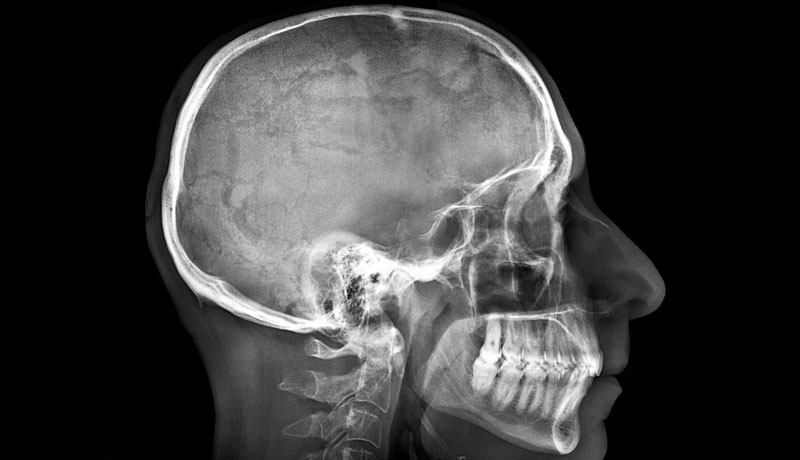Acoustic Neuromas
Acoustic neuromas are a rare form of benign brain tumor. They can affect hearing and balance, plus cause other symptoms if they press on certain nerves. They can be difficult to remove so it’s important to find a neurosurgeon with expertise.
Acoustic neuromas occur at a rate of one per 100,000 people and make up 8 percent of intracranial tumors. They can occur at any age but usually occur in mid-aged adults.
The acoustic (eighth cranial) nerve includes branches that mediate the sense of balance and head position (the vestibular nerve), as well as hearing (the cochlear nerve).
Acoustic neuromas arise from the vestibular portion of the acoustic nerve. Surrounding each nerve fiber are Schwann cells that form a substance called myelin, which insulates nerves and facilitates electrical conduction.
It is from Schwann cells in the vestibular nerve that an acoustic neuroma, also known as a vestibular schwannoma, arises. Schwannomas also may be referred to as neurilemomas, neurolemmomas, and peripheral fibroblastomas.
Symptoms of Acoustic Neuromas
Because of the location of acoustic neuromas, the initial signs of these tumors involve issues with hearing and balance. Common symptoms caused by compression of the eighth cranial nerve include:
- tinnitus (ringing in the ears)
- hearing loss, which typically starts only on one side
- disequilibrium, which might lead to issues steadying yourself or falls
- vertigo.
As the tumor enlarges, it expands in a region near the brainstem – the space of the cerebellopontine angle – and the seventh cranial nerve, which controls the facial muscles. When a tumor is large enough to compress surrounding structures, it may cause symptoms such as:
- headaches
- facial numbness and/or weakness, primarily caused by pressure on the facial nerve
- double vision
- nausea
- vomiting
- hydrocephalus, a blockage in the flow of the cerebrospinal fluid that bathes the brain and spinal cord.
Diagnosing Acoustic Neuromas
As with diagnosing most brain tumors, imaging studies are essential to diagnosis. Both magnetic resonance imaging (MRI) and computed tomography (CT) scans can be used.
In the case of small tumors, CT scans may show only an enlargement of the ear canal, while MRI scans may show only a thickened eighth cranial nerve. For either study, an agent that provides contrast in the image is administered intravenously so neurological surgeons can visualize the tumor against the normal tissue in the background. Larger tumors will appear more distinctly on MRI scans, and symptoms caused by their effects on surrounding structures will be apparent.
After a patient has been diagnosed with an acoustic neuroma, several functional tests usually are performed. These include detailed audiologic tests to assess hearing and the House and Brackmann Scale that assesses the degree of function of the facial nerves. These tests provide a detailed picture of the functional involvement of the tumor so that surgery can be tailored to preserve this level of function.
Preservation of hearing is a significant concern; there are surgical approaches that result in hearing loss and those that do not. Neurological surgeons choose an approach based on the results of functional tests, size of the tumor and the patient’s overall health.
Treatment and Surgery for Acoustic Neuromas
If a tumor is small and does not cause symptoms, it may be observed over time rather than immediately treated.
In cases in which treatment is necessary, surgical removal has been considered the best treatment option. Because acoustic neuromas are slow-growing benign tumors, complete removal often results in a cure.
The advent of stereotactic radiosurgery, and in particular Gamma Knife radiosurgery, which involves the use of a highly focused beam of radiation to target the tumor, now provides an option that does not require open surgery and poses less threat to functional areas of the brain.
Stereotactic radiosurgery is usually for smaller tumors, however, it may also be used to treat the remnants of large tumors (greater than three centimeters in diameter) when a subtotal surgical resection is used to preserve facial function.
Because of the complexity and rarity of these tumors, treatment with either observation, surgery, or radiosurgery should be done by doctors and hospitals with extensive experience in the total management of these tumors. The team’s concentrated experience is what leads to the best possible outcomes for patients with acoustic neuromas.
Our expert neurosurgeons have extensive experience with complex brain tumors. Contact us to discuss your best treatment options.

